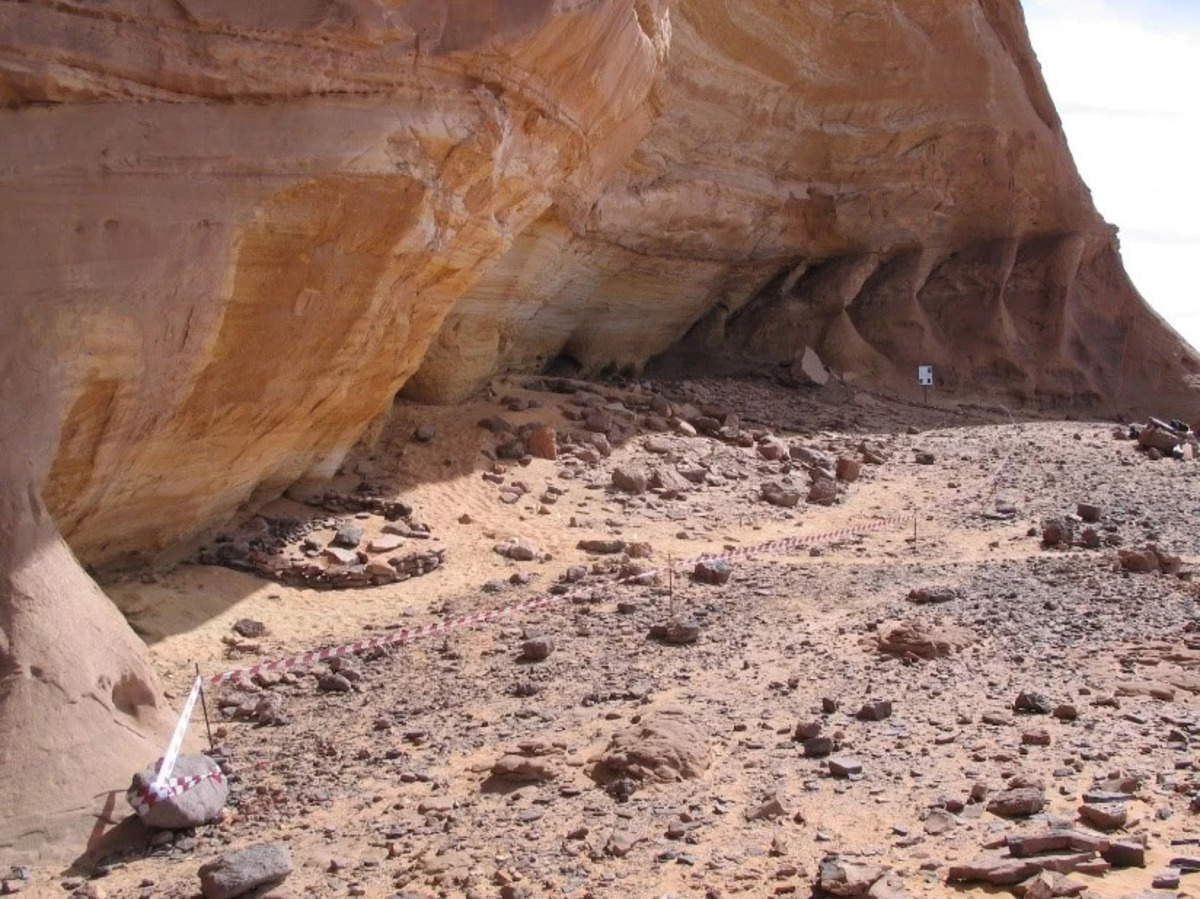Seven thousand years ago, when the Sahara was still a green and fertile expanse, an isolated human group inhabited what is now Libya, with no contact with sub-Saharan populations. This is revealed by a new study based on DNA analysis of two naturally mummified individuals found in the Takarkori rock shelter in central Sahara. The findings, published by an international team of researchers from the Max Planck Institute for Evolutionary Anthropology based in Leipzig, Germany, redefine the genetic history ofNorth Africa, showing that the region was not a migratory passage between the north and south of the continent, as previously assumed.
The genetic samples, among the oldest ever recovered from the area, present a never-before-seen window into life during the so-called African Wet Period (between 14,500 and 5,000 years ago), when the Sahara was crisscrossed by rivers and dotted with lakes, favoring human presence and the spread of pastoralism. Subsequent desertification turned the region into the world’s largest desert, making the preservation of genetic material exceptional.
“Our results suggest that while early North African populations were largely isolated, they received traces of Neanderthal DNA due to gene flow from outside Africa,” said senior author Johannes Krause, director of the Max Planck Institute for Evolutionary Anthropology.
“Our research challenges previous assumptions about the history of the North African population and underscores the existence of a deeply rooted and long isolated genetic lineage,” says first author from the Max Planck Institute for Evolutionary Anthropology, Nada Salem. “This finding reveals how pastoralism spread in the Green Sahara, probably through cultural exchange rather than large-scale migrations.”
“The study highlights the importance of ancient DNA for reconstructing human history in regions such as north-central Africa, providing independent support for archaeological hypotheses,” continues University of Florence senior author David Caramelli.
“By shedding light on the Sahara’s deep past, we aim to increase our knowledge of human migrations, adaptations and cultural evolution in this key region,” added Sapienza University of Rome senior author Savino di Lernia.



Genomic analyses indicate that the Takarkori individuals belonged to a distinct North African genetic lineage that separated from sub-Saharan populations about 50,000 years ago, which is the same period when modern humans began to spread out of Africa. This lineage remained genetically isolated until the African Wet Period, suggesting genetic continuity in the region for thousands of years. Although this genetic lineage no longer exists in its original form today, it is still a central component of the genetic makeup of North African populations. The finding reveals that the genetic history of North Africa is much more complex and layered than previously assumed.
Contrary to the widespread notion that the Green Sahara fostered mixing between North Africa and sub-Saharan Africa, the study shows that genetic flows between these two areas remained limited. The individuals analyzed show no trace of sub-Saharan ancestry, a finding that disproves the hypothesis of the Sahara as a migratory bridge between the two African macro-regions. The spread of pastoralism in the Sahara, according to the researchers, would not have occurred through the displacement of populations, but rather through a transfer of cultural and technological knowledge. This finding thus downplays the role of migration in the spread of innovations in prehistoric North Africa.
Another key finding from the research is the genetic connection between Takarkori individuals and hunter-gatherers who lived in Morocco 15,000 years ago at the Taforalt site. The latter were associated with the Iberomaurusian lithic industry, a prehistoric culture predating the African Wet Period. Both groups are found to be equally distant from sub-Saharan populations, confirming that despite the favorable climate of the Green Sahara, the two areas remained genetically separate.
The study also offers new information on the relationship between early North Africans and Neanderthals. DNA analysis shows that Takarkori individuals possessed ten times less Neanderthal genetic material than present-day non-African populations, but more than contemporary sub-Saharan populations. The study thus marks a fundamental step in understanding human dynamics in the prehistoric Sahara. The discovery of a genetic lineage that has remained isolated for more than 50,000 years and the confirmation of little interaction with sub-Saharan Africa compel a revision of theories of migration in this region.
 |
| First ancient genomes from Green Sahara discovered: humanity isolated for thousands of years |
Warning: the translation into English of the original Italian article was created using automatic tools. We undertake to review all articles, but we do not guarantee the total absence of inaccuracies in the translation due to the program. You can find the original by clicking on the ITA button. If you find any mistake,please contact us.